
"No man can be a genius in slapshoes and a flat hat." -Buster Keaton -

"No man can be a genius in slapshoes and a flat hat." -Buster Keaton -
A newlywed couple sets out to construct a house using a prefabricated kit, not realizing that a rival has tampered with the kit’s component numbering. “One Week” was released on September 1, 1920. It is notable for being the first of Keaton’s independent releases, even though he had filmed “The High Sign” earlier. Keaton felt that “The High Sign” was not strong enough for his debut, so he released it the following year while recovering from an injury. Additionally, “One Week” was one of the top-grossing films of 1920.

One Week (1920) is full of unforgettable moments that show off Buster Keaton’s comic brilliance.
1. The House Roll: Imagine a house spinning 360 degrees due to an unexpected storm. It starts off slowly, but as the storm intensifies, the house spins faster and faster. It’s completely absurd and mind-blowing.
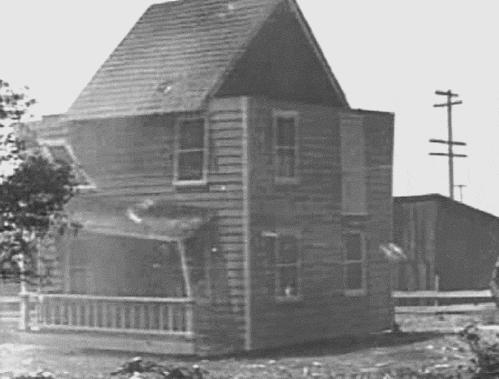
2. The Ladder Gags: Keaton’s genius really shines with ladders. He uses them as bridges, slides, and even catapults, each trick more ridiculous and amusing than the last.
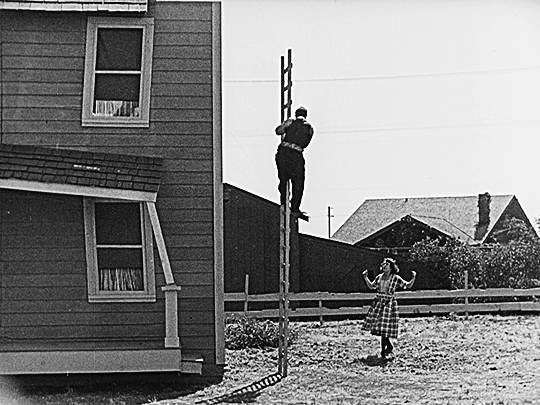
3. The Piano Mover: A strongman effortlessly lifts a piano onto his shoulder, turning a mundane task into a slapstick spectacle that leaves you chuckling.
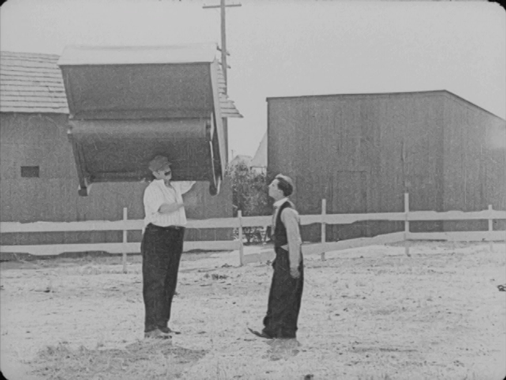
4. The Soap Scene: There’s a clever bit in this scene but is also noted for a risqué (for its time) scene where Seely’s character takes a bath. She drops a bar of soap and waits for a hand to cover the camera lens before leaning out to retrieve it. This scene, intended as a joke, has been highlighted in documentaries as an example of pre-Hays Code censorship.
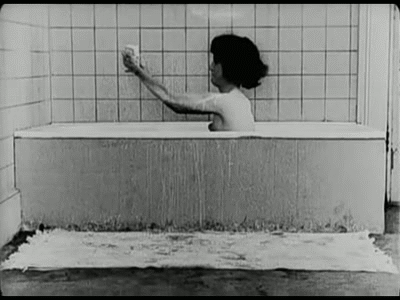
5. The Train and House: One of the wildest scenes, a train barrels right through the house. This is one of the moments where Buster Keaton brilliantly describes how he double-crossed his audience.
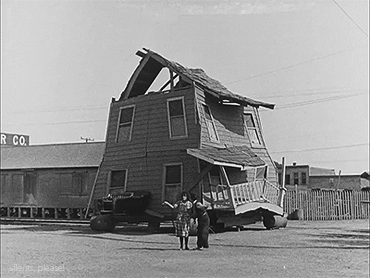
According to the book Buster Keaton Remembered, “One Week” was likely inspired by “Home Made,” a 1919 educational short film by the Ford Motor Company promoting prefabricated housing. Keaton incorporated many elements from this film, such as the wedding, the Model T, and the use of daily calendar pages to depict the house being built in one week, into his comic parody. Years later, Keaton revealed to an interviewer that the film’s title is a playful nod to “Three Weeks,” a notorious 1907 sex novel by Elinor Glyn. Keaton humorously remarked that his film was “one-third as scandalous.”
According to Eleanor Keaton, Buster initially planned to merge two of his two-reel films, “One Week” and “The Boat” (1921), into a four-reel feature charting a young couple’s adventures. Virginia Fox, who was cast for “The Boat,” was set to be replaced by Sybil Seely, the star of “One Week.” However, this idea never materialized and Sybil Seely was the leading actress in “The Boat”
Many of the special effects in “One Week,” such as the house spinning during a storm and the train collision, were filmed live rather than using models. The house was built on a turntable to allow it to spin during the storm scene, and the train collision was shot at the Inglewood train station.
Keaton reused the gag where the side of a building falls on him but he emerges unscathed through a window opening. This bit, originally from the Fatty Arbuckle–Keaton film “Back Stage,” also appears in “The Blacksmith” (1922) and “Steamboat Bill, Jr.” (1928).
One of the few times Keaton was seriously injured on set was after a fall from two stories while stepping out of the bathroom. His arms and back swelled up a few hours after filming, and his physical trainer treated him with hot and cold showers, olive oil, and horse liniment.
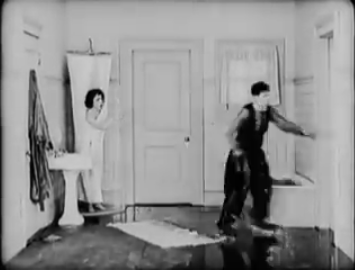
Watch the full film by clicking the play button below.
The story follows a newlywed couple who receive a kit house as a wedding gift. The instructions explain how to build the house by assembling materials from numbered packing crates. However, a spurned suitor secretly renumbers the crates, leading to a lopsided structure with revolving walls, exterior kitchen fixtures, and upper-floor doors opening to nothing.
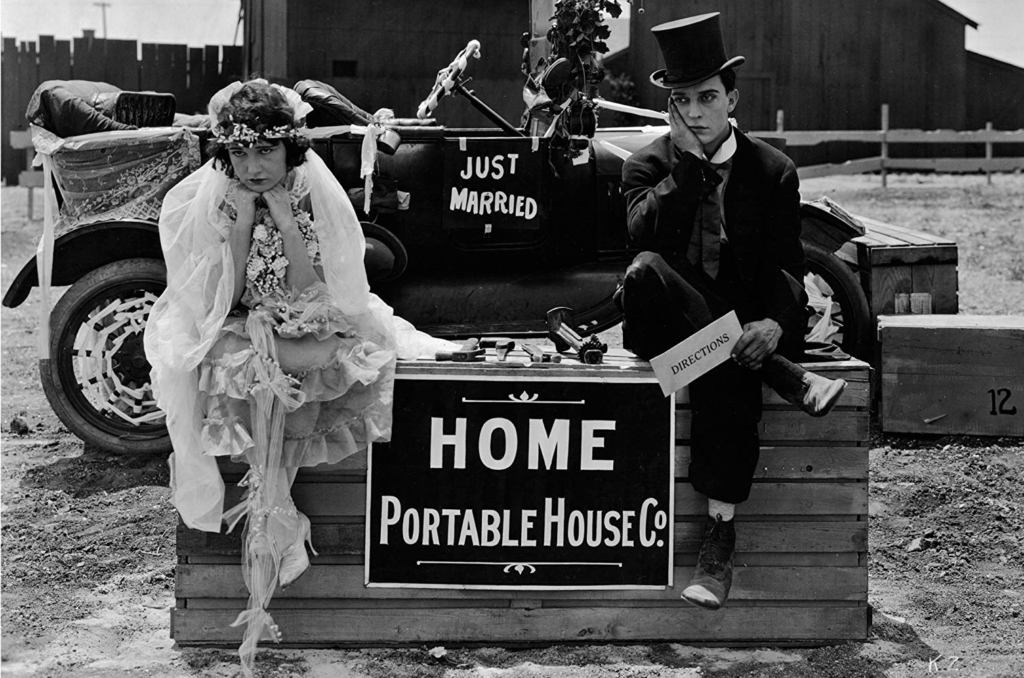
During a housewarming party on Friday the 13th, a storm spins the house and its occupants like a merry-go-round.

The couple discover that they have built the house on the wrong lot and must move it. They manage to relocate it on rollers, but it stalls on railroad tracks.

As they attempt to move it out of the way of an oncoming train, the train passes on the adjacent track, and the couple sigh with relief. However, another train immediately strikes and demolishes the house. The groom stares at the scene, places a “For Sale” sign with the building instructions on the heap, and walks off with his bride.
